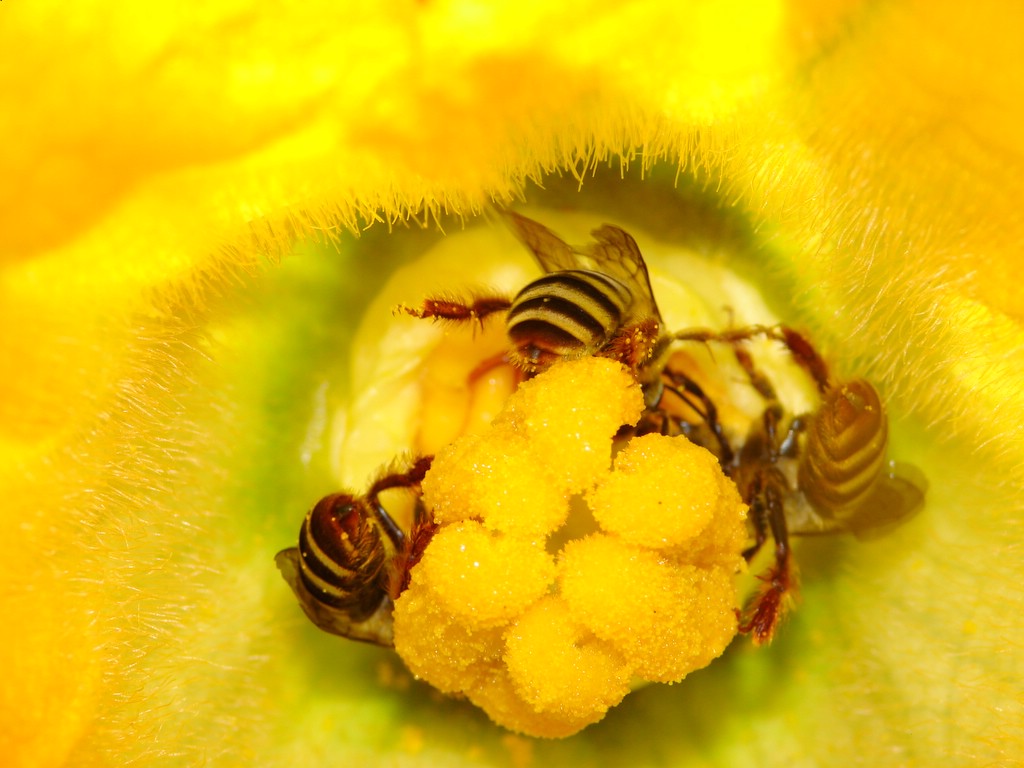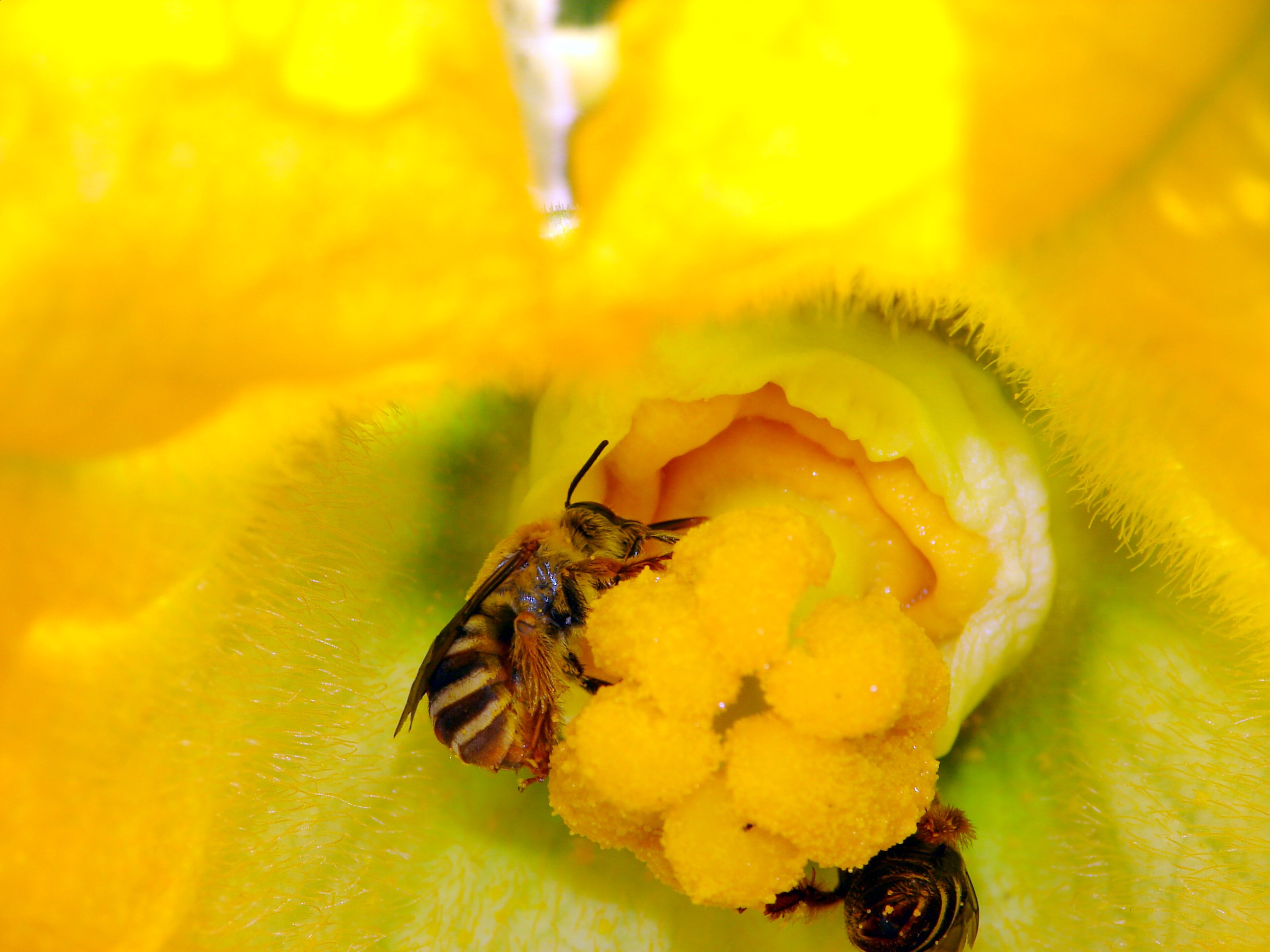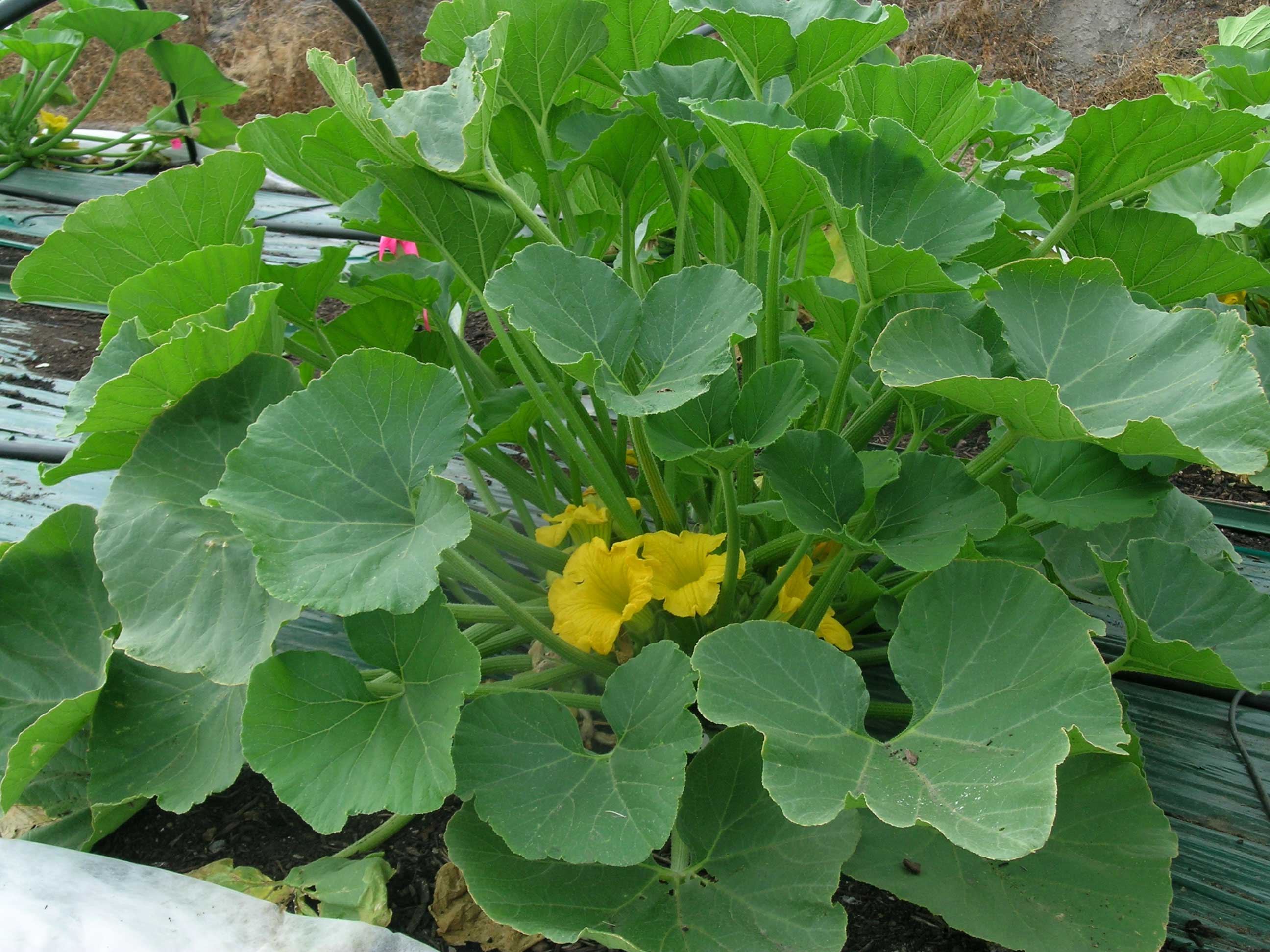Audio: mp3 

Peponapis pruinosa
Copyright © 2009 Jim Cane
At long last we are enjoying full summer, and with it, the bounty of our gardens. Last August on this program, you learned about our native squash bees. Unlike honeybees and bumblebees, Squash bees are not social. Each female excavates a simple vertical tunnel in the dirt the diameter of a pencil. Lateral tunnels terminate in tiny chambers where she caches pollen and nectar to feed her progeny. She lays one egg per chamber. These nests are well concealed.
But you can readily see the feverish activity of males and females at squash, pumpkin and gourd flowers soon after sunrise, often before honeybee activity. Squash bees are the size of honey bees, but earlier, faster and more deliberate in their flight. Males have a yellow spot on the face. Unlike honeybees, female squash bees carry squash pollen dry in a brush of hairs on their hind legs.
Both sexes of squash bee are valuable pollinators, indeed they are the unheralded pollinators of most of the nations squash and pumpkins. But there is more to their story in Utah. Their native hosts, the wild gourds, only grow in the hot low deserts. Native Americans domesticated and cultivated squashes and gourds, but the practice did not spread north of the red rock country. Across most of Utah and the northern US in general, we have squash bees because we grow squash. In Utah, European settlers first grew squashes only 150 years ago. Each annual generation of squash bees spread further north, hopscotching from homestead to homestead, reaching as far north today as Boise Idaho. As you pick your zucchinis, butternuts and pumpkins, realize that your squash’s flowers also fed the descendants of our squash bee pioneers.
This is Linda Kervin for Bridgerland Audubon Society.
Credits:
Photo: Courtesy and © Copyright 2009 Jim Cane
Text: Jim Cane, Bridgerland Audubon Society
Additional Reading:
Our Native Squash Bees, Wild About Utah, 12 August 2008, https://wildaboututah.org/squash-bees/
Squash Pollinators of the Americas Survey (SPAS), James Cane, USDA Pollinating Insect Research Unit, Utah State University
2009: https://www.ars.usda.gov/Research/docs.htm?docid=16595
2005: https://www.ars.usda.gov/Research/docs.htm?docid=12041
Perfect Pumpkin Pollinators: The Squash Bees!, James Cane, Frank A. Eischen, Blair J. Sampson, USDA-ARS, https://www.ars.usda.gov/is/AR/archive/nov08/bees1108.htm Also published in Agricultural Research magazine Nov/Dec 2008 https://www.ars.usda.gov/is/AR/archive/nov08/
Across the Americas, Squash and Gourd Bees Are Superb Pollinators, Marcia Wood, Dec 30, 2008, https://www.ars.usda.gov/is/pr/2008/081230.htm
Celebrating Wildflowers, Pollinator of the Month, Squash Bees, Jim Cane, USDA ARS, Bee Biology & Systematics Lab, Logan, Utah https://www.fs.fed.us/wildflowers/pollinators/pollinator-of-the-month/squash_bees.shtml
Crop domestication facilitated rapid geographical expansion of a specialist pollinator, the squash bee Peponapis pruinosa, Margarita M. López-Uribe, James H. Cane, Robert L. Minckley, Bryan N. Danforth
Proc. R. Soc. B 2016 283 20160443; DOI: 10.1098/rspb.2016.0443. Published 22 June 2016https://rspb.royalsocietypublishing.org/content/283/1833/20160443.abstract


